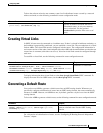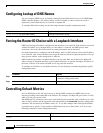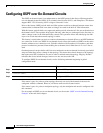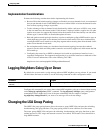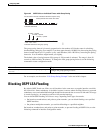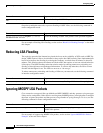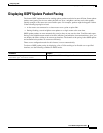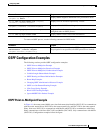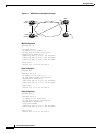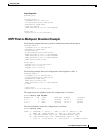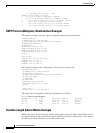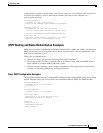
Configuring OSPF
Displaying OSPF Update Packet Pacing
IPC-239
Cisco IOS IP Configuration Guide
Displaying OSPF Update Packet Pacing
The former OSPF implementation for sending update packets needed to be more efficient. Some update
packets were getting lost in cases where the link was slow, a neighbor could not receive the updates
quickly enough, or the router was out of buffer space. For example, packets might be dropped if either
of the following topologies existed:
• A fast router was connected to a slower router over a point-to-point link.
• During flooding, several neighbors sent updates to a single router at the same time.
OSPF update packets are now automatically paced so they are not sent less than 33 milliseconds apart.
Pacing is also added between resends to increase efficiency and minimize lost retransmissions. Also, you
can display the LSAs waiting to be sent out an interface. The benefit of the pacing is that OSPF update
and retransmission packets are sent more efficiently.
There are no configuration tasks for this feature; it occurs automatically.
To observe OSPF packet pacing by displaying a list of LSAs waiting to be flooded over a specified
interface, use the following command in EXEC mode:
Command Purpose
Router# show ip ospf flood-list
interface-type interface-number
Displays a list of LSAs waiting to be flooded over an interface.



